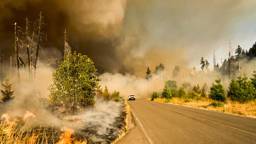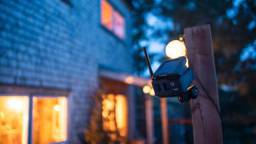So, it’s finally time to knock down that eyesore of a porch, gut the 1970s kitchen … or maybe even knock down a wall or two to open up your cabin’s floor plan. Whether your demolition project is small or large, it’s important to follow a few basic safety guidelines to ensure that you – or your precious cabin – aren’t injured during the demo process.
Ensure structural stability
Ever heard of a “load-bearing wall?” Those ugly posts in the middle of your den and the partition wall blocking your view of the lake could be more than eyesores; they could be holding your cabin upright. Prior to demo, enlist the advice of an experienced carpenter or architect to determine if the walls can be removed. In many cases, alternative techniques will let you open up your cabin without it toppling down.
Locate hidden utilities
As tempting as it is to just pick up the sledgehammer and start knocking stuff down, it’s imperative that you perform a pre-demolition inspection first. Many cabins lacked a definitive floor plan when first constructed, and subsequent renovations may have created a torturous path for electrical, water supply, or HVAC runs. This means those seemingly innocuous walls or ceilings could contain hidden – but still active – utilities.
Cut small, shallow inspection windows in the walls or ceilings prior to large-scale demolition. This can usually be accomplished by removing sections of drywall or paneling between two studs and peeling away any insulation.
For outdoor demo projects, don’t forget that there are often utilities underground that could be impacted by excavation. Contact your local underground-utility locator before you dig.
Environmental hazards
If your cabin was built in an era when eight out of 10 doctors had a cigarette preference, you might encounter lead and/or asbestos during the demo process. Demolition can release such hazardous materials into the air, where they are more likely to cause serious health effects.
Lead, along with other heavy metals, was commonly used in paints until the 1970s. Additionally, significant sources of lead from automobile exhaust accumulated in soil and on buildings until the mid-1990s. Sawing through old siding can introduce lead-laden particles in the air, making proper respirator use critical. Use a simple lab test to determine the lead levels in your cabin’s old paint, and properly dispose of any lead-contaminated waste.
Asbestos has been used for insulating purposes for decades, though it can also be found in everything from rooftop shingles to floor tiles. Although asbestos is relatively harmless when left undisturbed, airborne asbestos is a very dangerous material that has been linked to cancer and other ailments. If you suspect the presence of asbestos, contact a professional hazardous-waste inspector to survey your cabin. Your health will thank you.
Ensure structural stability
Ever heard of a “load-bearing wall?” Those ugly posts in the middle of your den and the partition wall blocking your view of the lake could be more than eyesores; they could be holding your cabin upright. Prior to demo, enlist the advice of an experienced carpenter or architect to determine if the walls can be removed. In many cases, alternative techniques will let you open up your cabin without it toppling down.
Locate hidden utilities
As tempting as it is to just pick up the sledgehammer and start knocking stuff down, it’s imperative that you perform a pre-demolition inspection first. Many cabins lacked a definitive floor plan when first constructed, and subsequent renovations may have created a torturous path for electrical, water supply, or HVAC runs. This means those seemingly innocuous walls or ceilings could contain hidden – but still active – utilities.
Cut small, shallow inspection windows in the walls or ceilings prior to large-scale demolition. This can usually be accomplished by removing sections of drywall or paneling between two studs and peeling away any insulation.
For outdoor demo projects, don’t forget that there are often utilities underground that could be impacted by excavation. Contact your local underground-utility locator before you dig.
Environmental hazards
If your cabin was built in an era when eight out of 10 doctors had a cigarette preference, you might encounter lead and/or asbestos during the demo process. Demolition can release such hazardous materials into the air, where they are more likely to cause serious health effects.
Lead, along with other heavy metals, was commonly used in paints until the 1970s. Additionally, significant sources of lead from automobile exhaust accumulated in soil and on buildings until the mid-1990s. Sawing through old siding can introduce lead-laden particles in the air, making proper respirator use critical. Use a simple lab test to determine the lead levels in your cabin’s old paint, and properly dispose of any lead-contaminated waste.
Asbestos has been used for insulating purposes for decades, though it can also be found in everything from rooftop shingles to floor tiles. Although asbestos is relatively harmless when left undisturbed, airborne asbestos is a very dangerous material that has been linked to cancer and other ailments. If you suspect the presence of asbestos, contact a professional hazardous-waste inspector to survey your cabin. Your health will thank you.
SUIT UP! Protect Yourself With Basic Demo Gear
When undertaking a demolition project, the use of personal protective equipment (PPE) is essential. Having basic PPE will help you weather many of the possible hazards of the demo process.
Hard hats: Inspect both the hard outer shell and the suspension for defects each day of use, and don’t paint the shell. The chemicals in the paint could affect the structural stability.
Eyewear: Unlike your reading glasses, safety glasses certified by the American National Standards Institute (ANSI) are specifically designed to deflect high-speed projectiles without shattering. Use a good pair of polycarbonate eyeglasses with side shields during basic demo. For sanding, grinding, or other high-dust activities, use goggles and face masks instead.
Hearing protection: Ear plugs are mandatory PPE for high-noise demo projects, but don’t just stick them in your ears: Roll them into tight cylinders, place them carefully into the ear canal, and allow them to expand. Supplement with earmuff-style protection for high-noise projects, and limit your exposure to 30-minute increments.
Dust masks & respirators: Dust masks (one face strap, no NIOSH label) are meant to prevent only larger particles from being inhaled. Respirators (two straps, NIOSH label) are the proper choice when you might encounter hazardous dusts, vapors, or gases. If you’re unsure what hazards you might encounter, opt for the respirator.
Steel-toe boots: Unless you want this little piggy to run straight to the ER, use quality steel-toe boots during demo. While polycarbonate toe-caps are lighter and offer the same impact resistance as steel, they don’t offer similar protection against cuts and punctures.
When undertaking a demolition project, the use of personal protective equipment (PPE) is essential. Having basic PPE will help you weather many of the possible hazards of the demo process.
Hard hats: Inspect both the hard outer shell and the suspension for defects each day of use, and don’t paint the shell. The chemicals in the paint could affect the structural stability.
Eyewear: Unlike your reading glasses, safety glasses certified by the American National Standards Institute (ANSI) are specifically designed to deflect high-speed projectiles without shattering. Use a good pair of polycarbonate eyeglasses with side shields during basic demo. For sanding, grinding, or other high-dust activities, use goggles and face masks instead.
Hearing protection: Ear plugs are mandatory PPE for high-noise demo projects, but don’t just stick them in your ears: Roll them into tight cylinders, place them carefully into the ear canal, and allow them to expand. Supplement with earmuff-style protection for high-noise projects, and limit your exposure to 30-minute increments.
Dust masks & respirators: Dust masks (one face strap, no NIOSH label) are meant to prevent only larger particles from being inhaled. Respirators (two straps, NIOSH label) are the proper choice when you might encounter hazardous dusts, vapors, or gases. If you’re unsure what hazards you might encounter, opt for the respirator.
Steel-toe boots: Unless you want this little piggy to run straight to the ER, use quality steel-toe boots during demo. While polycarbonate toe-caps are lighter and offer the same impact resistance as steel, they don’t offer similar protection against cuts and punctures.












